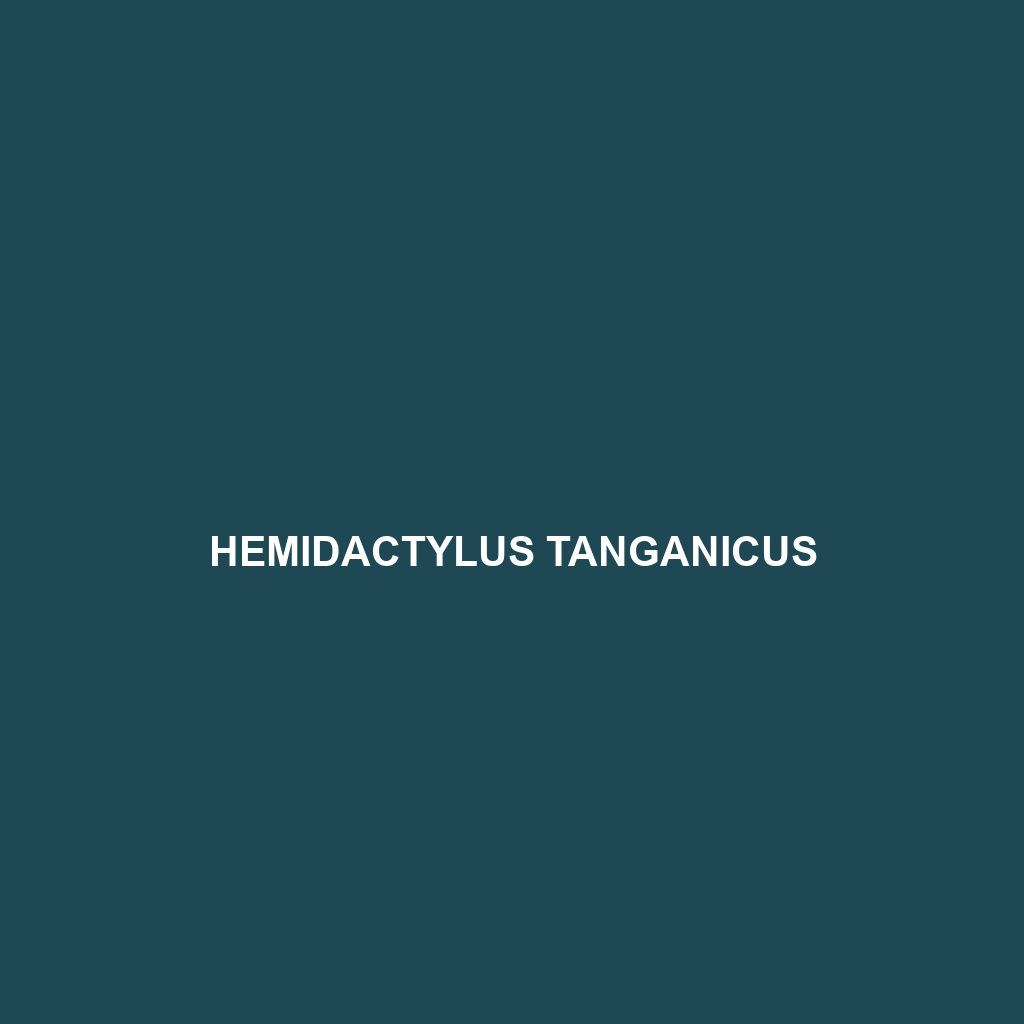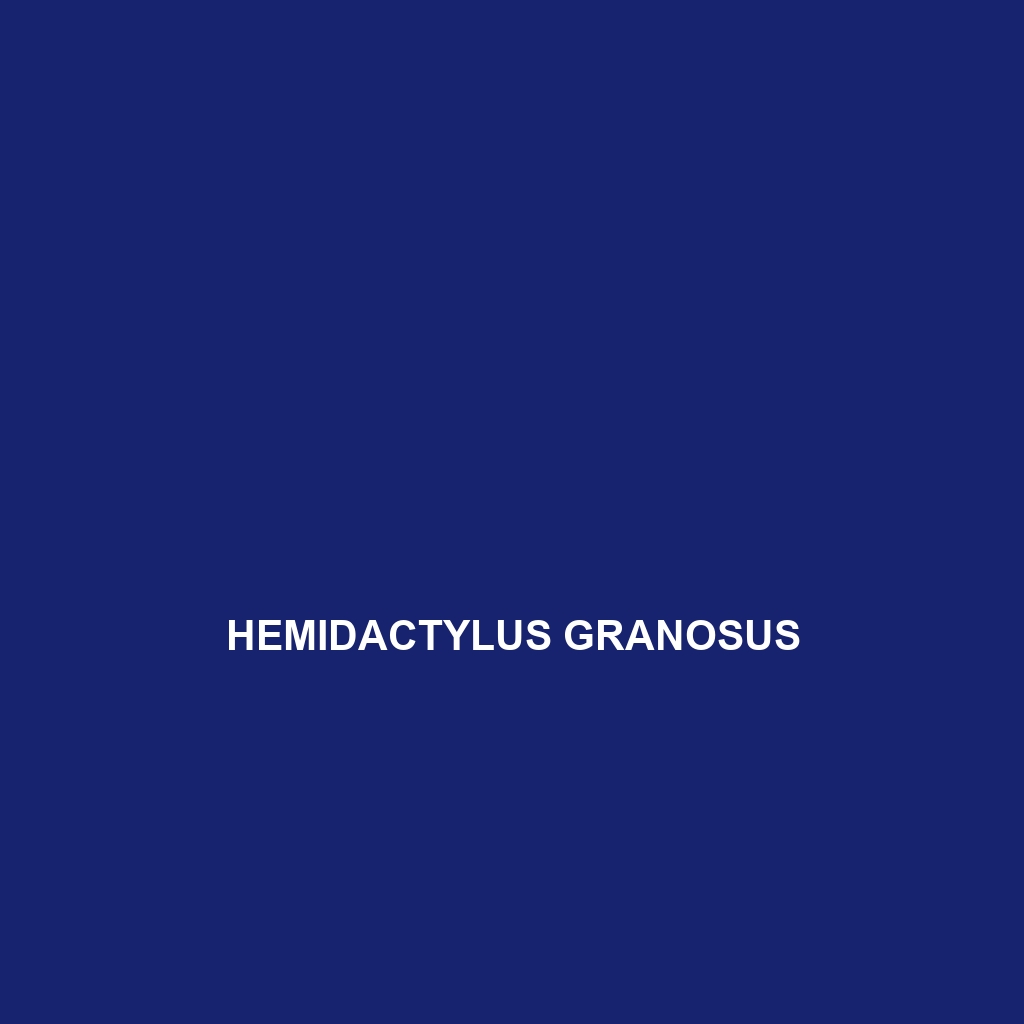<p>Discover the <b>Lesser Earless Lizard (<i>Holbrookia subcaudalis</i>)</b>, a small, fascinating reptile native to the arid regions of North America, known for its distinctive lack of external ears and excellent camouflage. These insectivorous lizards thrive in sandy habitats, playing a crucial role in controlling insect populations and supporting the ecosystem's health.</p>
Tag: insectivorous lizards
Hemidactylus yajurvedi
<b>Hemidactylus yajurvedi</b>, commonly found in tropical and subtropical regions of India, is a slender gecko known for its distinctive camouflage and nocturnal behavior. This insectivorous species plays a vital role in controlling insect populations and is recognized for its ability to regenerate its tail, enhancing its survival in diverse habitats.
Hemidactylus tanganicus
<p>Discover the <b>Hemidactylus tanganicus</b>, or Tanganika gecko, a nocturnal, insectivorous species thriving in East Africa's humid regions. With its distinctive patterns, adhesive toe pads for climbing, and vital role in pest control, this gecko is an essential component of its ecosystem.</p>
Andinosaura aurea
<p><b>Andinosaura aurea</b>, commonly known as the golden skink, is a vibrant insectivorous lizard native to the Andean rainforests of South America. With a striking golden coloration and a diurnal lifestyle, this species plays a crucial role in controlling insect populations and maintaining ecological balance.</p>
Hemidactylus sinaitus
<p>Discover the <b>Hemidactylus sinaitus</b>, or Sinai gecko, a nocturnal reptile native to the eastern Mediterranean, particularly Egypt's Sinai Peninsula. With a slender body measuring 7 to 10 cm, this adaptable gecko thrives in rocky deserts and man-made structures, primarily feeding on insects while playing a crucial role in its ecosystem.</p>
Hemidactylus persicus
Discover the Hemidactylus persicus (Persian Gecko), a slender, nocturnal reptile native to arid regions of the Middle East, known for its remarkable climbing abilities, insectivorous diet, and unique tail regeneration. Adaptable to various environments, this gecko plays a crucial role in controlling insect populations while contributing to the ecological balance.
Hemidactylus granosus
<p>The <b>Hemidactylus granosus</b>, or granulated house gecko, is a medium-sized, adaptable creature known for its coarse, granular skin and predominantly insectivorous diet. Thriving in tropical and subtropical regions, it plays a vital role in controlling insect populations while often being found in urban environments near human settlements.</p>
Hemidactylus chipkali
Discover the <b>Hemidactylus chipkali</b>, a small nocturnal gecko found across South Asia, known for its adaptive camouflage, climbing abilities, and role in natural pest control. This resilient species thrives in various habitats, from urban areas to rainforests, and features unique defense mechanisms like tail autotomy.
Hemidactylus bouvieri
<b>Hemidactylus bouvieri</b>, or Bouvier's house gecko, is a nocturnal lizard native to the rainforests and savannas of Madagascar, known for its slender body, large bulging eyes, and distinctive light brown to beige coloration with darker spots. This adaptable species plays a critical ecological role by controlling insect populations and is capable of tail regeneration, enhancing its survival in the wild.
Gymnophthalmus underwoodi
Discover the unique Gymnophthalmus underwoodi (Underwood's skink), a small, diurnal lizard native to the tropical rainforests of Central and South America. With its streamlined body, glossy skin, and insectivorous diet, this skink thrives in humid environments, playing a vital role in its ecosystem by regulating insect populations and enhancing soil quality.









